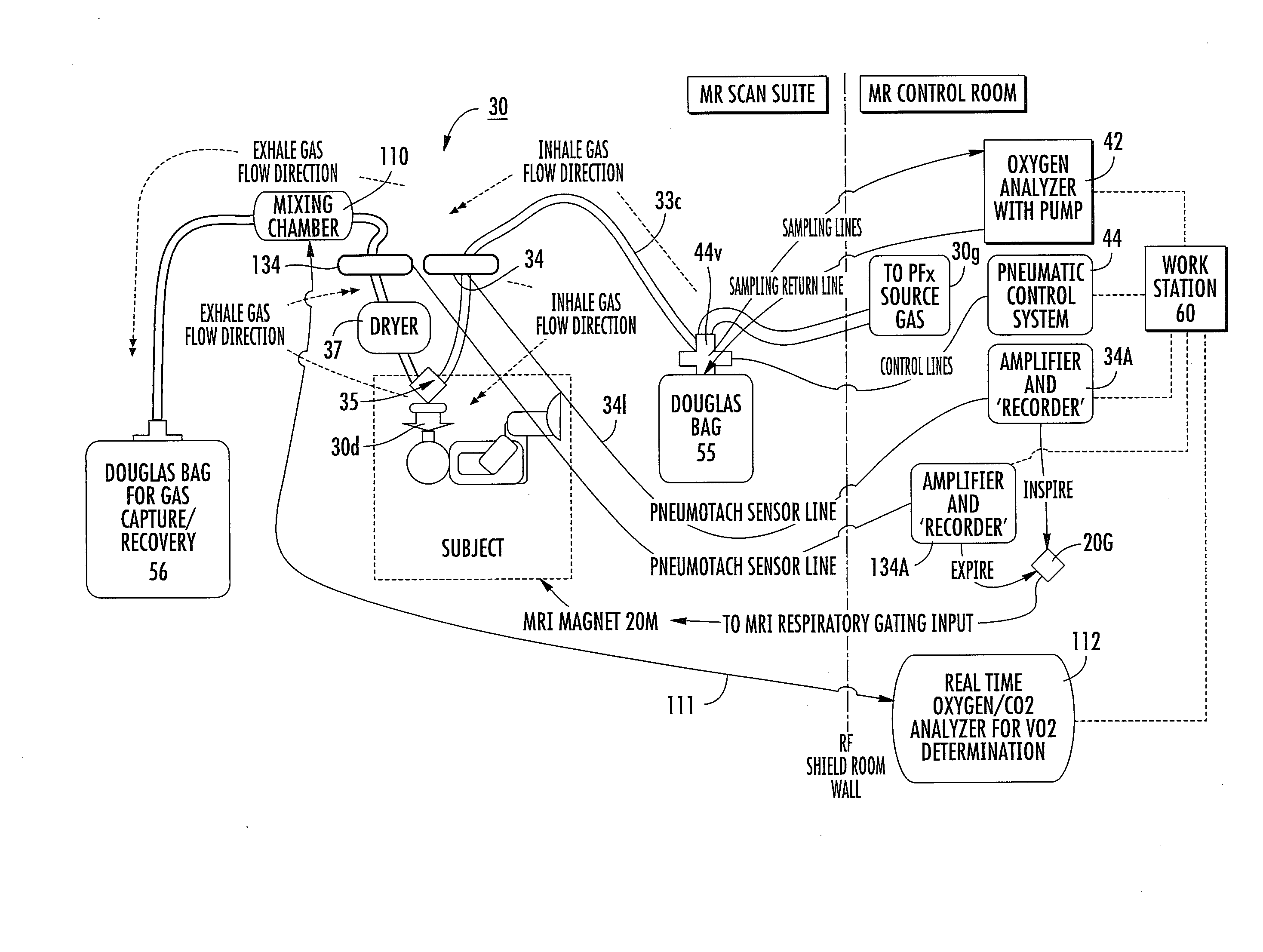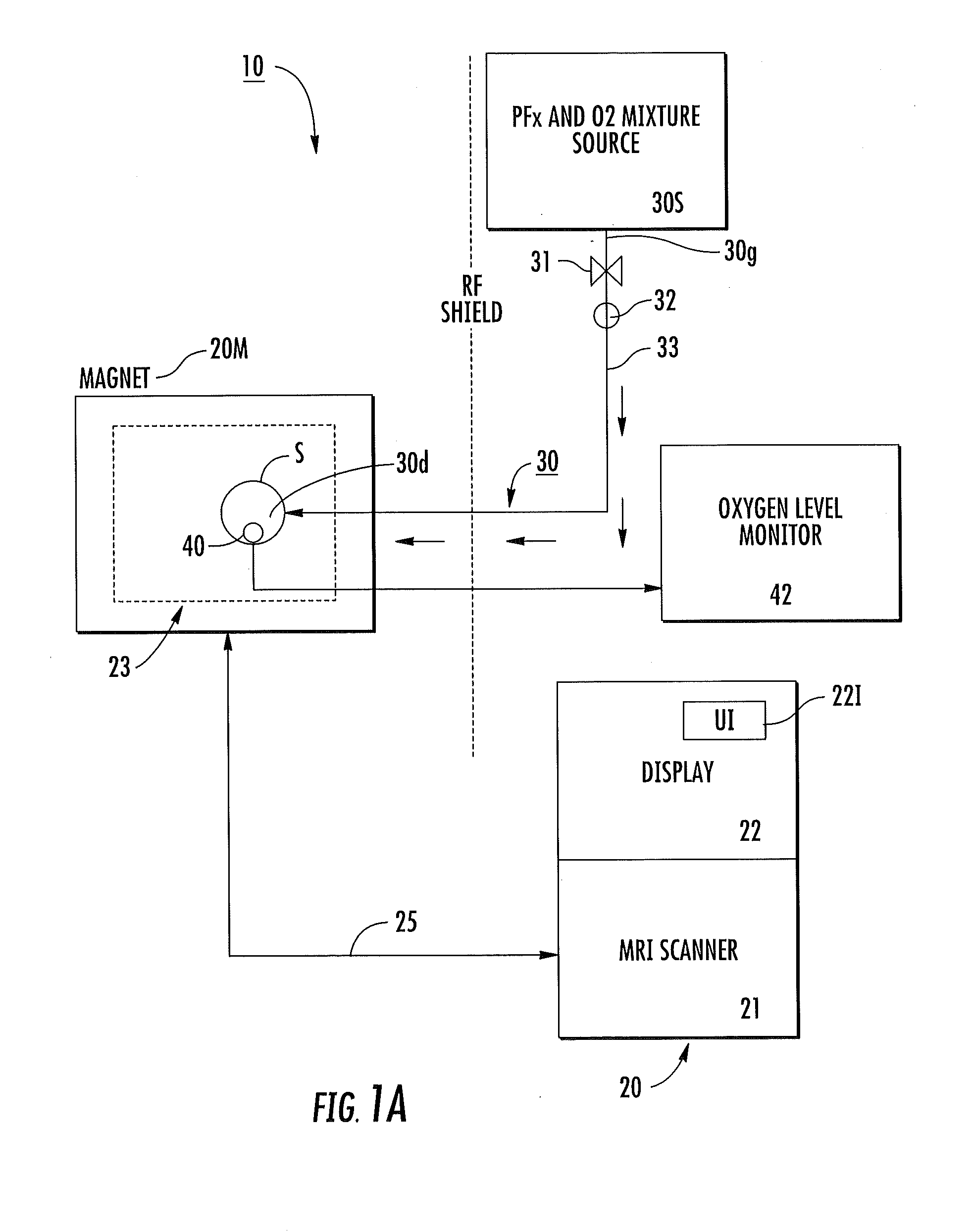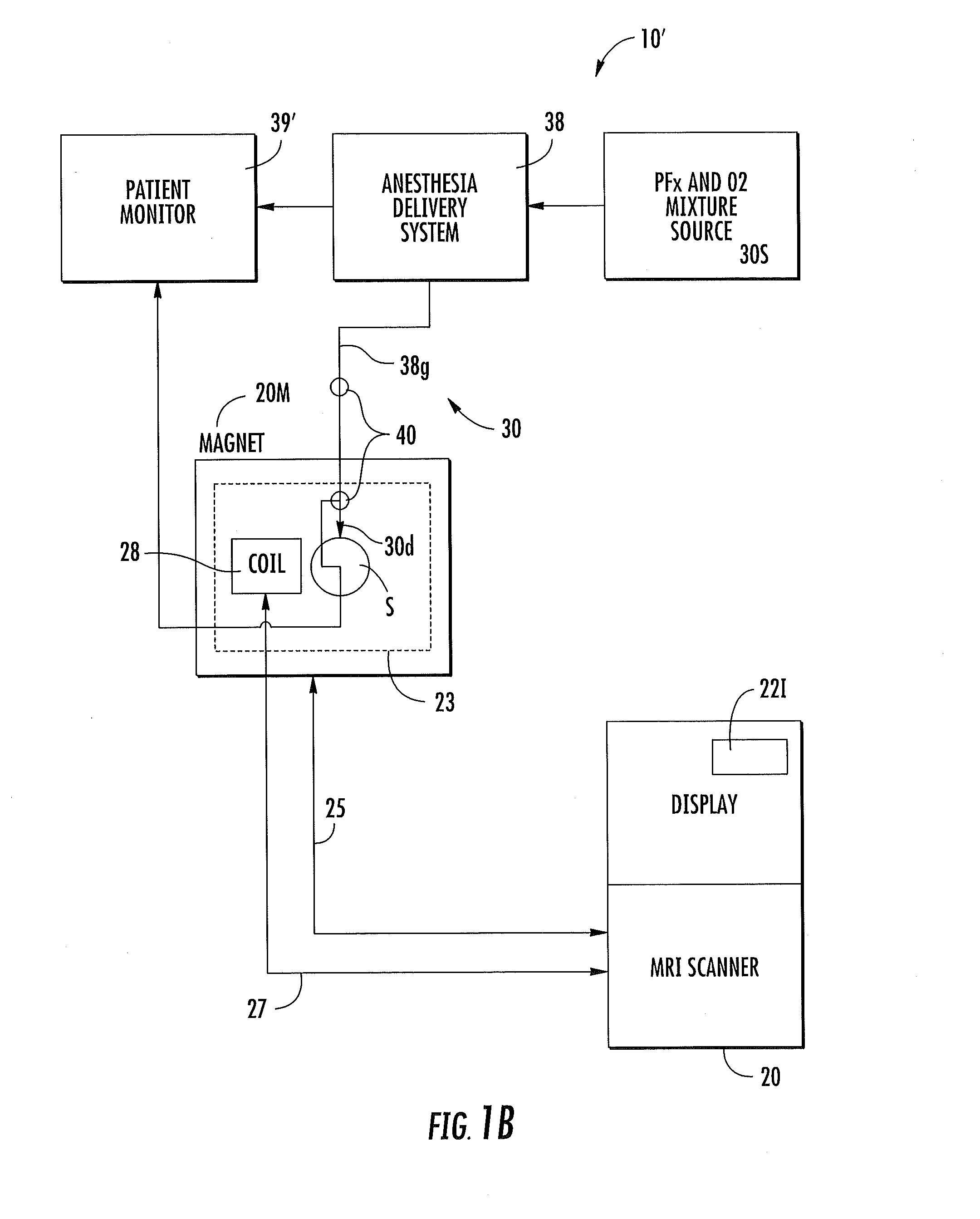Systems, methods, compositions and devices for in vivo magnetic resonance imaging of lungs using perfluorinated gas mixtures
a technology of perfluorinated gas mixture and magnetic resonance imaging, which is applied in the field of noninvasive in vivo 19f magnetic resonance imaging, can solve the problems of low spirometry cost, lack of regional information about ventilation distribution or ventilation dynamics in the lung, and little appreciation of how to identify copd early
- Summary
- Abstract
- Description
- Claims
- Application Information
AI Technical Summary
Benefits of technology
Problems solved by technology
Method used
Image
Examples
example 1
Breath-Hold Imaging
[0212]FIGS. 8 and 9 illustrate 3D in-vivo human lung images of a healthy 60 year old male obtained using MRI of a PFx / oxygen mixture. It is believed that this imaging methodology has the potential to be a ‘game-changing’ approach to evaluation and understanding of regional human lung ventilation as well as in the efficacy evaluation of pharmaceuticals involved in the treatment of lung disease. FIG. 8 is a panel of images obtained using a single breath hold of PFP. FIG. 8 shows 3D slice partitions of the 19F PFx images (scan time 15 seconds). Note the signal in the gas mixture delivery tube in the top frames of FIG. 8. It is contemplated that this signal data can be used as an external calibration standard for PFx signal.
[0213]FIG. 9 is a panel of three sets of images with the center set being a 3D fusion of 1H images (which are shown on the far left set of images as “base” images) co-registered with the PFx images (shown as the set on images on the far right). The...
example 2
MRI Cine Images of Lung Function
[0218]Cine images of breathing lungs can be generated as a “movie of breathing” that shows lung air spaces as they fill and evacuate during a respiratory cycle (including inhalation to exhalation) or during a FEV 1 maneuver to visualize or show where the gas goes or stays and / or ventilation defects. The image data can be obtained over a plurality of respiratory cycles and the corresponding images (e.g., image slices) can be co-registered illustrating anatomy changes and ventilation data during the respiratory cycle.
[0219]The cine images can be gated cine images. That is, the respiratory waveform can be monitored and the image data registered (gated) to the part of the cycle during which it was obtained. A typical respiratory cycle (inhale to exhale) is about 2-5 seconds long. Several images can be taken, each in less than one second, and temporally registered or matched to the associated part of the respiratory cycle. The image data can be obtained ov...
example 3
Free-Breathing Scans
[0221]19F gas (and 1H) images of the human lung and airways can be obtained in free-breathing delivery to extract regional lung ventilation information. This imaging may be carried out so that the ventilation defects are shown or identified in near real-time. Particular disease states may make one of the PFx agents preferable over another such as where breathing cycle time for respiratory / gated imaging may be disease dependent.
[0222]The PFx gas agents will allow very rapid imaging with the possibility of near real time imaging of ventilation dynamics.
[0223]The image signal acquisition can be carried out to provide gated / cine images with free breathing strategies. Other cycle-based image generation techniques can also be used, such as, for example, spiral and propeller with passive “free-breathing” delivery of the PFx / O2 gas mixtures and room air to provide dynamic visualizations or cines of lung motion (which can include ventilation information / data for both inha...
PUM
 Login to View More
Login to View More Abstract
Description
Claims
Application Information
 Login to View More
Login to View More - R&D
- Intellectual Property
- Life Sciences
- Materials
- Tech Scout
- Unparalleled Data Quality
- Higher Quality Content
- 60% Fewer Hallucinations
Browse by: Latest US Patents, China's latest patents, Technical Efficacy Thesaurus, Application Domain, Technology Topic, Popular Technical Reports.
© 2025 PatSnap. All rights reserved.Legal|Privacy policy|Modern Slavery Act Transparency Statement|Sitemap|About US| Contact US: help@patsnap.com



